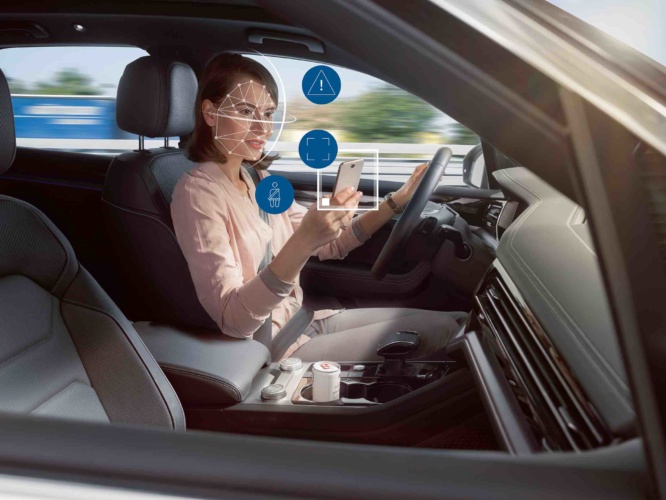Bosch technology to detect drowsy drivers
A driver monitoring system that uses an AI-enabled in car camera to detect when a driver is becoming drowsy or distracted could help save tens of thousands of lives over the next 20 years it is claimed.

Developed by engineers at Bosch, the technology – which is scheduled to go into production in 2022 – uses a camera integrated in the steering wheel to detect when a driver’s eyelids are getting heavy, when they are distracted, and when they turn their head toward their passenger or the rear seats.
Nissan brain to vehicle tech helps cars learn from drivers
JLR technology monitors brainwaves for alertness
Intelligent image-processing algorithms and machine learning technologies - trained using real-world examples - are then able to make a judgement on how tired the driver is on the basis of factors such as eyelid position and eye-blink rate.
According to Bosch, if the system determines that the driver is tired or distracted, it will then provide an alert or warning and use the driver assistance systems to intervene. “If the car knows what its driver and occupants are doing, driving will become safer and more convenient,” commented Harald Kroeger, member of the Robert Bosch GmbH board of management.
Register now to continue reading
Thanks for visiting The Engineer. You’ve now reached your monthly limit of news stories. Register for free to unlock unlimited access to all of our news coverage, as well as premium content including opinion, in-depth features and special reports.
Benefits of registering
-
In-depth insights and coverage of key emerging trends
-
Unrestricted access to special reports throughout the year
-
Daily technology news delivered straight to your inbox










Water Sector Talent Exodus Could Cripple The Sector
Maybe if things are essential for the running of a country and we want to pay a fair price we should be running these utilities on a not for profit...